Rhythm by Homer Laughlin
LaurelHollowPark.net, an informative website created and
maintained by Mark Gonzalez. Copyright © 2009-.
|
 Designed by Don Schreckengost, Rhythm was a plain round coupe shape line of dinnerware developed in the spring of 1950. Rhythm was put into production on September 25, 1950, and was made with decals and in five solid colors: burgundy, chartreuse, forest green, gray, and Harlequin yellow. Designed by Don Schreckengost, Rhythm was a plain round coupe shape line of dinnerware developed in the spring of 1950. Rhythm was put into production on September 25, 1950, and was made with decals and in five solid colors: burgundy, chartreuse, forest green, gray, and Harlequin yellow.
The initial assortment consisted of 10", 9", 8", 7", and 6" plates, 13", 11", and 9" platters, teacup and saucer, fruit cup, sugar and cover, creamer, 9" nappy (which doubled as a casserole base), casserole cover, teapot, sauceboat, and coupe soup. The cereal soup was picked up from Charm House and the shakers came from Swing Eggshell.
The only significant shape variation involves the creamer. It originally was the same height as the sugar base, but was replaced soon after the line's introduction by a taller version.
Three pieces were added in 1951: the 15" platter, water jug, and snack plate. The 15" platter and water jug were only offered with decals, while the snack plate was part of the solid color line.
Solid colored Rhythm was part of the general trade and was carried by many retailers. The official treatment number for Rhythm in solid-colored glazes as sold by F. W. Woolworth was W-551. Some of the larger firms sold Rhythm with Brittany rim soups and demitasse cups and saucers in all five glazes.
There were two Rhythm promotional sets: the Fiesta juice set and the Kitchen Kraft mixing bowls. In general, Fiesta juice sets are not difficult to find, but those in Rhythm glazes are rare.
Rhythm flatware was sometimes paired with hollowware from other shapes to create new lines. Rhythm flatware was often mixed with Cavalier Eggshell hollowware. Dura-Print lines called for Rhythm flatware with Charm House (and later Studio) hollowware.
|
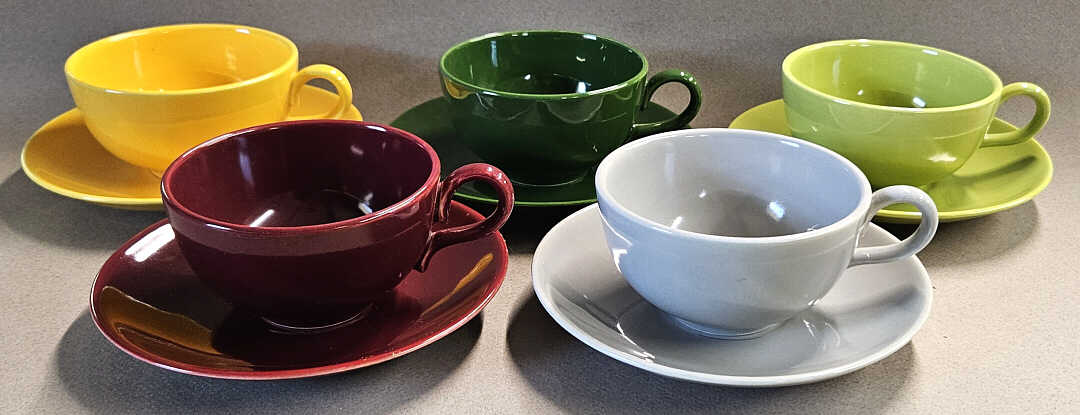
The five Rhythm colors: Harlequin yellow, burgundy, forest green, gray, and chartreuse |
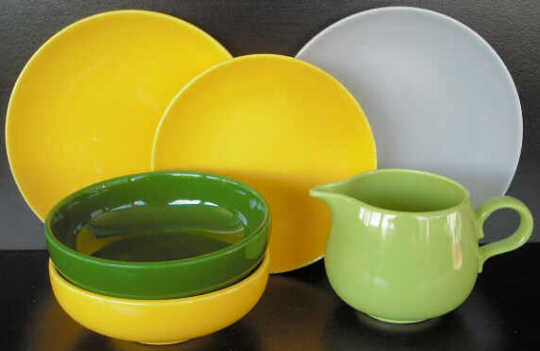
Rhythm in dark green, Harlequin yellow, chartreuse, and gray |
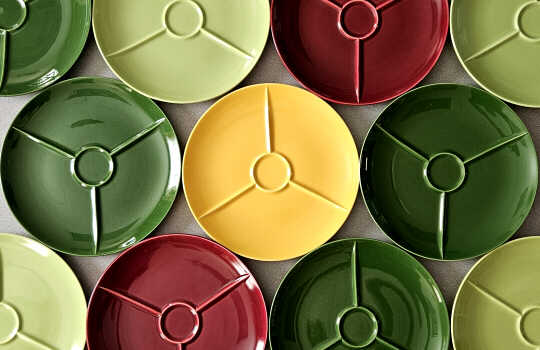
Rhythm 10" snack plates |
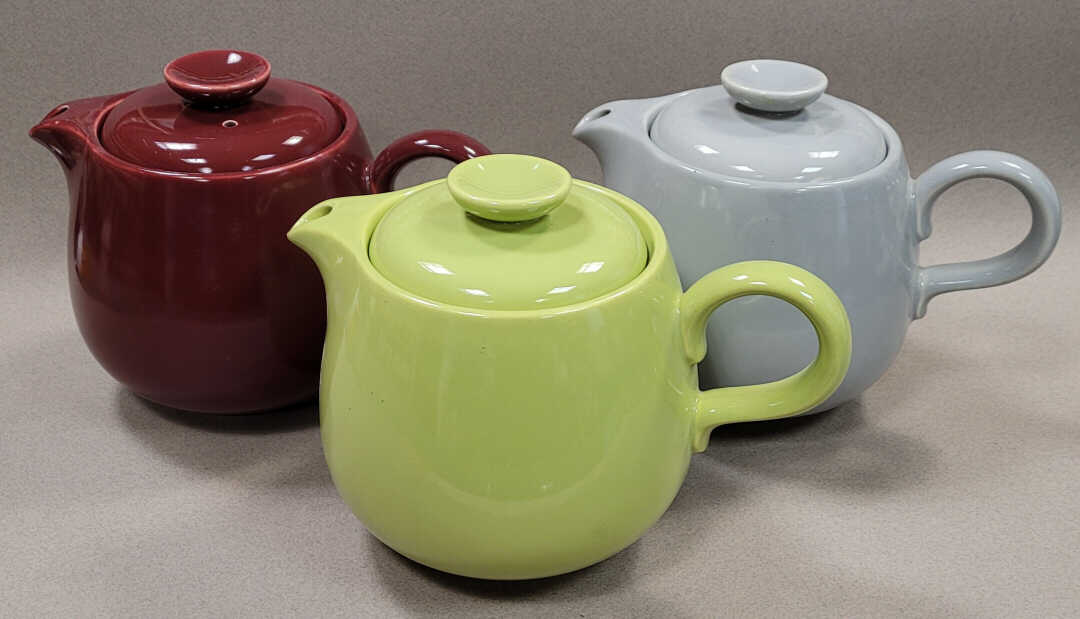
Teapots in burgundy, chartreuse, and gray |
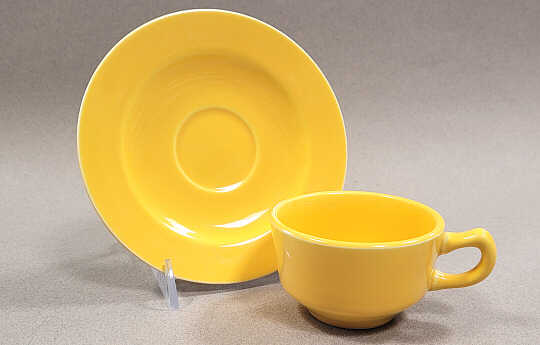
Brittany demitasse cup and saucer in Harlequin yellow |
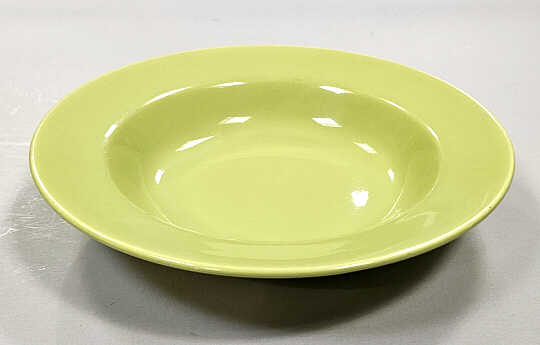
Brittany 8 ⅛" rim soup in chartreuse |
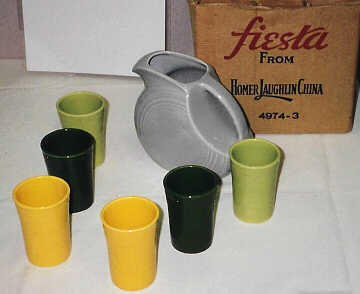
|
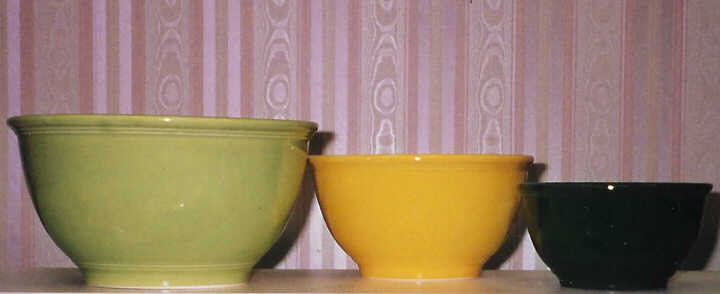
|
| Special promotional items using Rhythm glazes: a Fiesta juice set and Kitchen Kraft mixing bowls. |
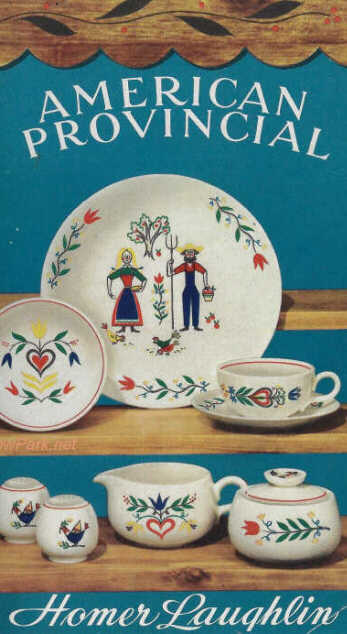 |
 |
| American Provincial (RY-104) brochure |

Rhythm creamers: original, short style: Red Apple (left) and the taller, restyled version in chartreuse (right) |

Rhythm platter, W-251: Cowboy |
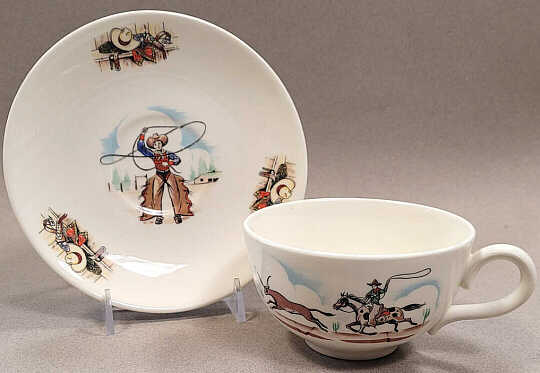
Rhythm teacup and saucer, W-251: Cowboy |
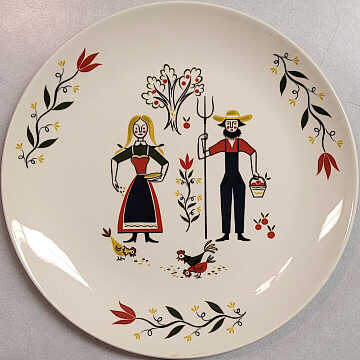
RY-104: American Provincial |
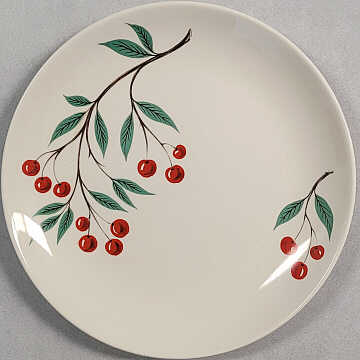
GCM-99: Cherries |
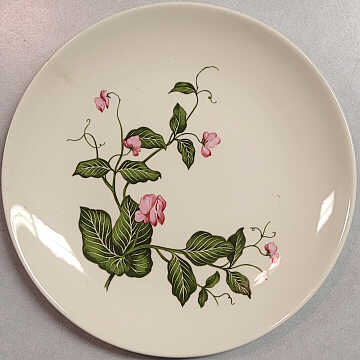
W-350: Sweet Pea |

Rhythm salt and pepper shakers, covered sugar, and creamer with RY-292: Lyric |

Rhythm shakers, RY-133: Bordeaux |
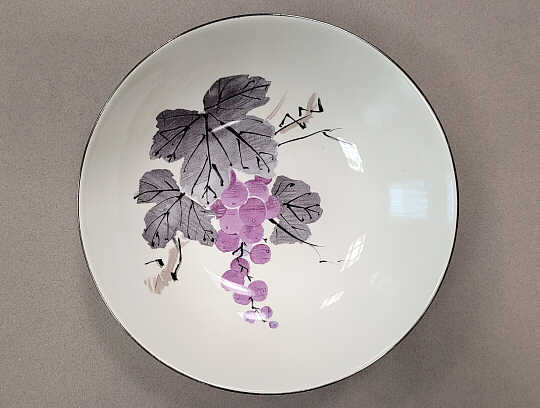
Rhythm nappy, RY-133: Bordeaux |
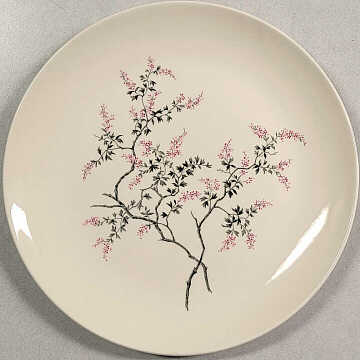
RY-307: Wisteria |
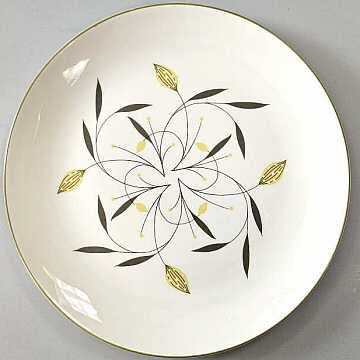
RY-238: Cascade |
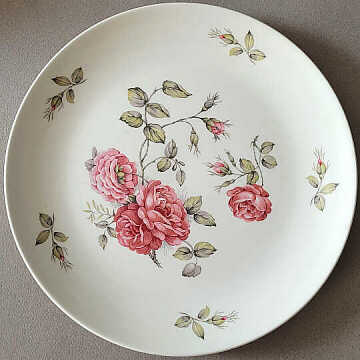
RY-214: Madisson Rose |
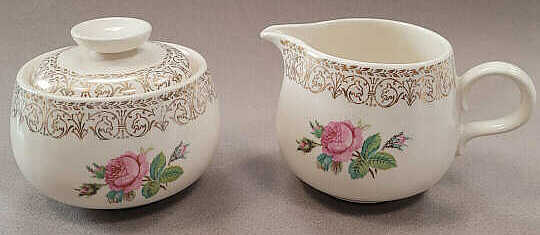
Rhythm covered sugar and creamer, CP-189: Melody |

Rhythm covered sugar and creamer, CP-172: American Beauty |
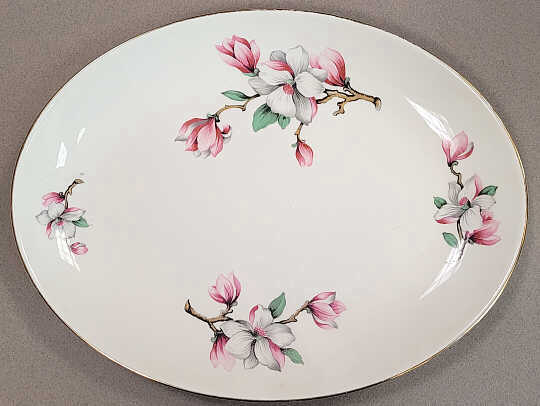
Rhythm platter, RY-106: Dogwood |
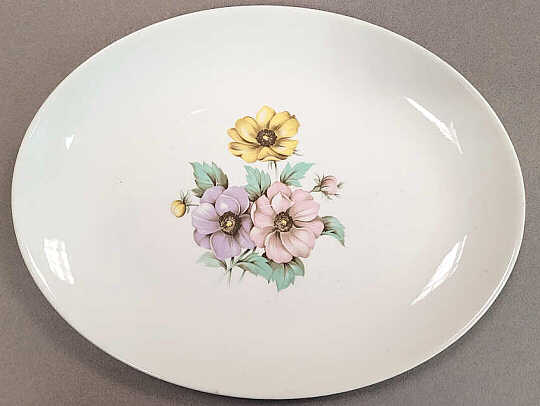
Rhythm platter, W-351: Cosmos |

Rhythm covered sugar and creamer, CP-132: Flamingo |
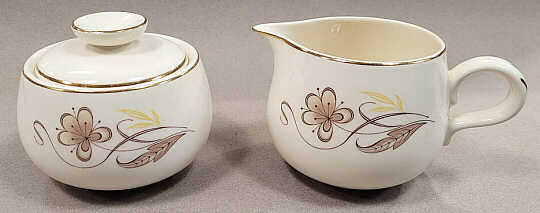
Rhythm covered sugar and creamer, RY-157: Preference |
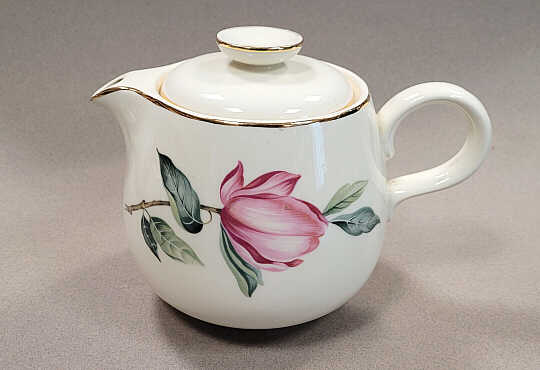
Rhythm teapot, RY-112: Pink Magnolia |

Rhythm sauceboat, RY-112: Pink Magnolia |
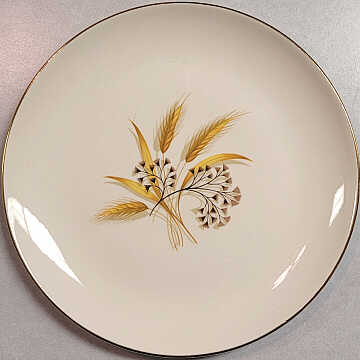
RY-225: Golden Wheat |
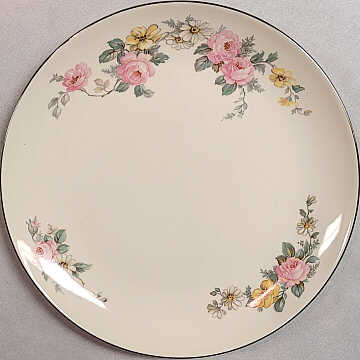
RY-209: Armand |
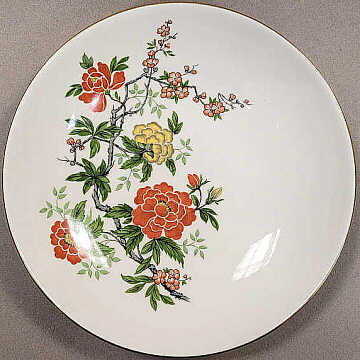
RY-170: Ming Glory |
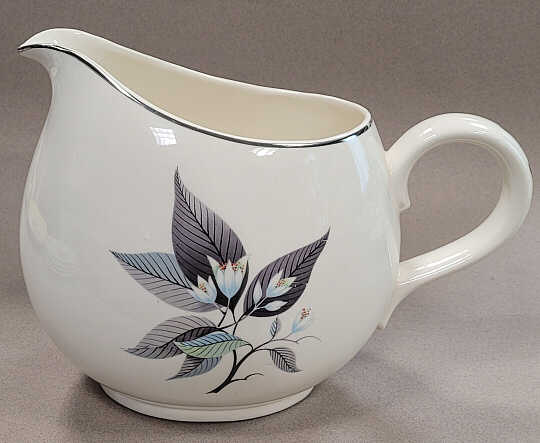
Rhythm water jug, RY-135: Lotus Hai |
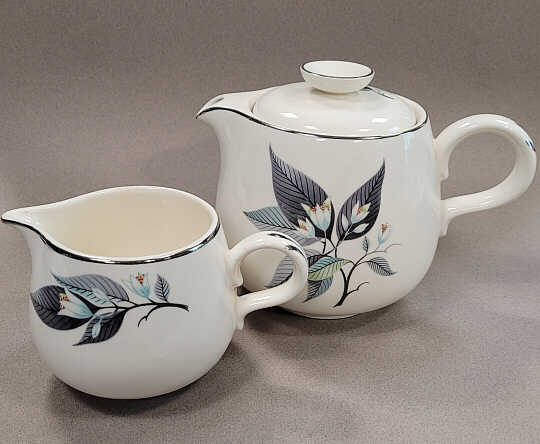
Rhythm creamer and teapot, RY-135: Lotus Hai |

RY-346: Starflower |
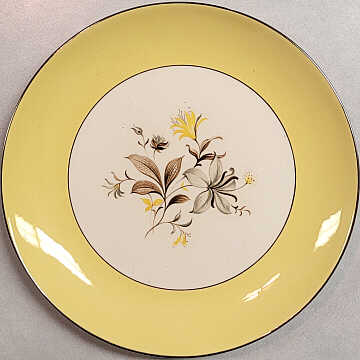
RY-284: Maytime |

RY-308: Empress |

Rhythm teapot, RY-189: Pink Petal |
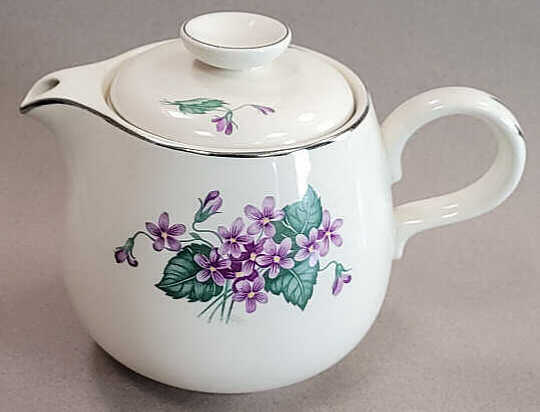
Rhythm teapot, RY-178: Violets |
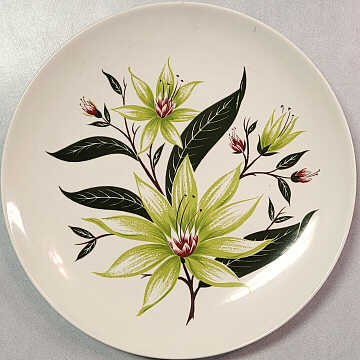
Rhythm 10" plate, RY-117: Desert Lily |
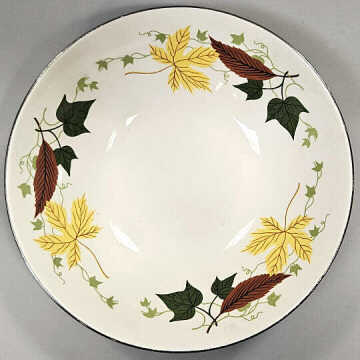
Rhythm nappy, RY-159: Maple Leaf |
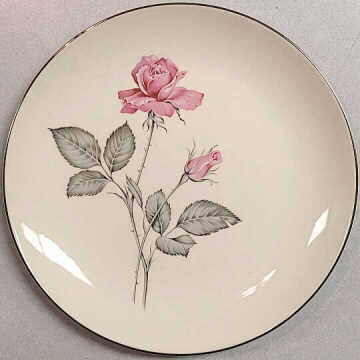
Rhythm 10" plate, RY-348: Zylstra Rose |
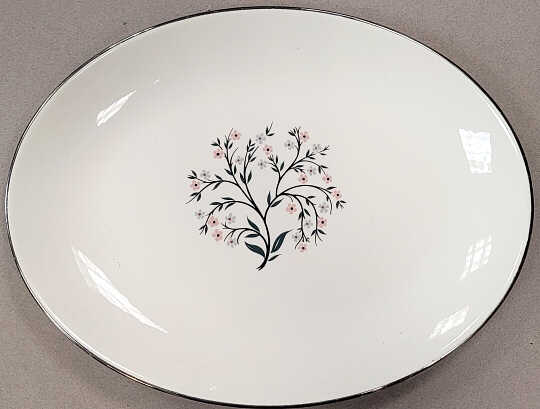
Rhythm platter, RY-194: Pink Tree |
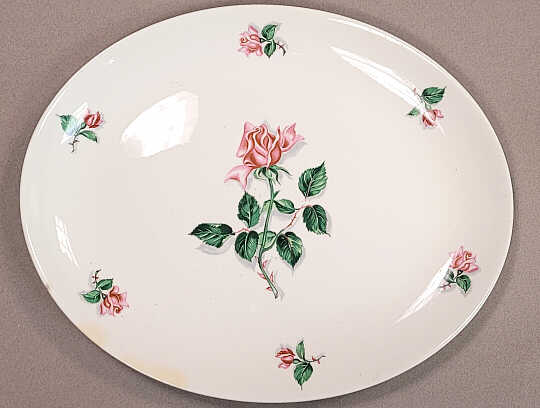
Rhythm platter, RY-212: Bouquet |
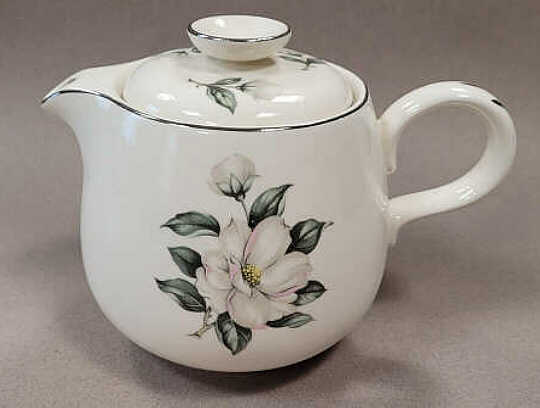
Rhythm teapot, RY-217: Magnolia |
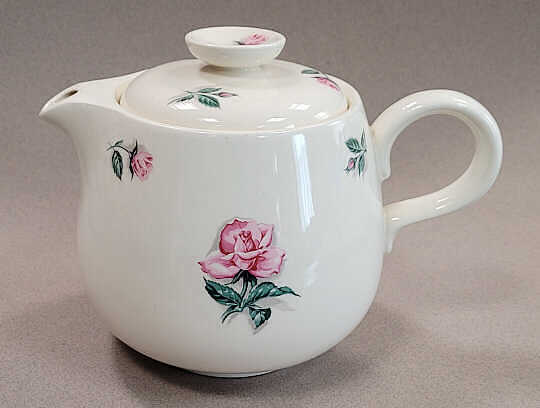
Rhythm teapot: Rhythm Rose |
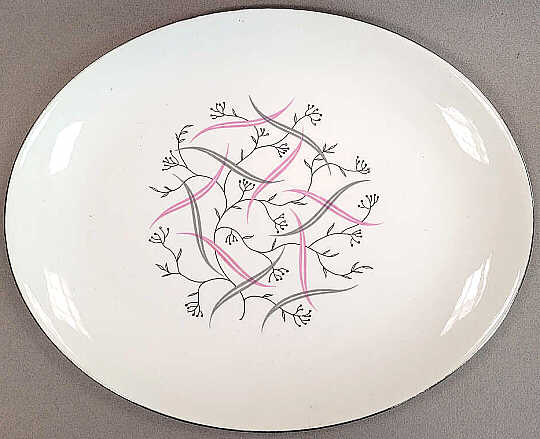
Rhythm platter, RY-194: Allegro or Adrian |
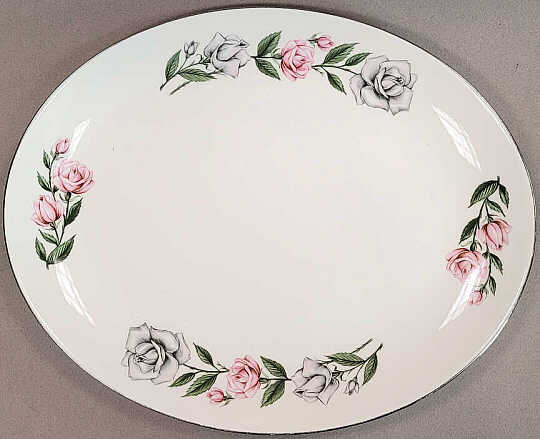
Rhythm platter, RY-259: Minuet |

Rhythm nappy, JJ-152: White Flower |
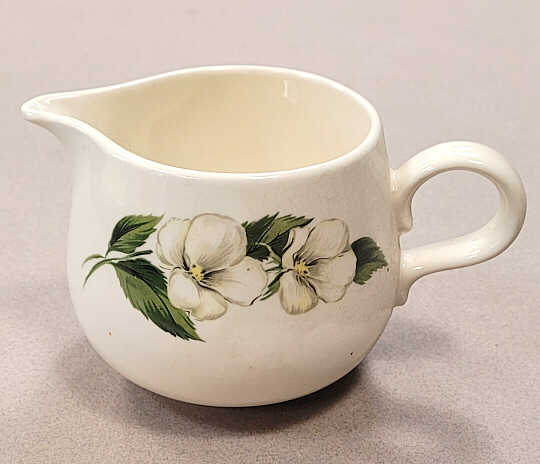
Rhythm creamer, JJ-152: White Flower |
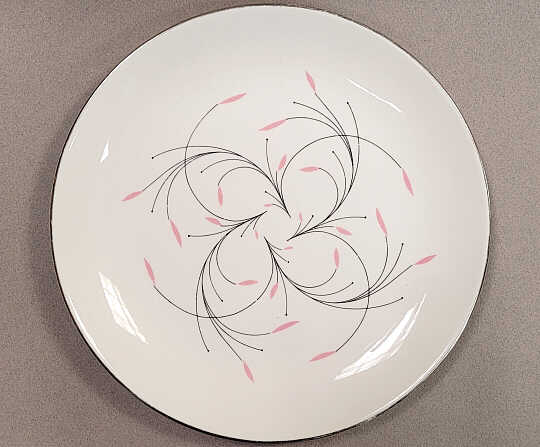
Rhythm 10" plate, RY-172: Capri |
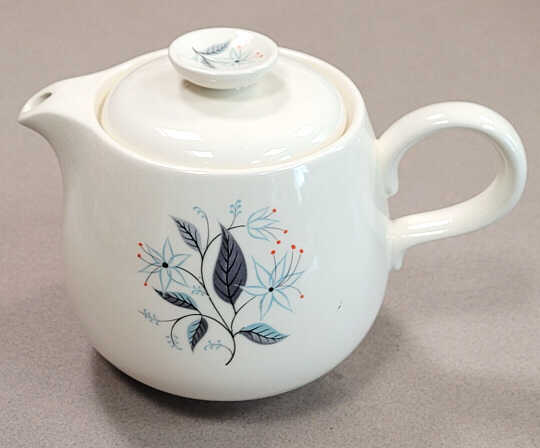
Rhythm teapot, Twilight |
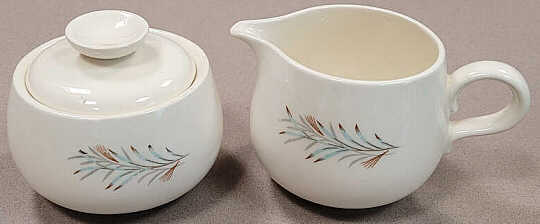
Rhythm covered sugar and creamer, Fortune |
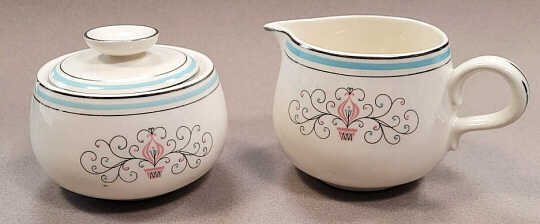
Rhythm covered sugar and creamer, RY-236: Rubaiyat |
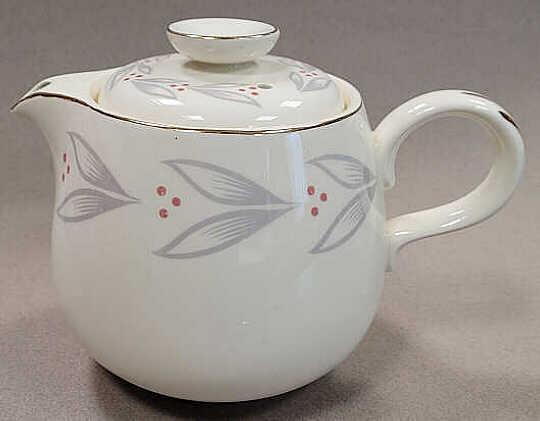
Rhythm teapot, RY-167: Gray Laurel |
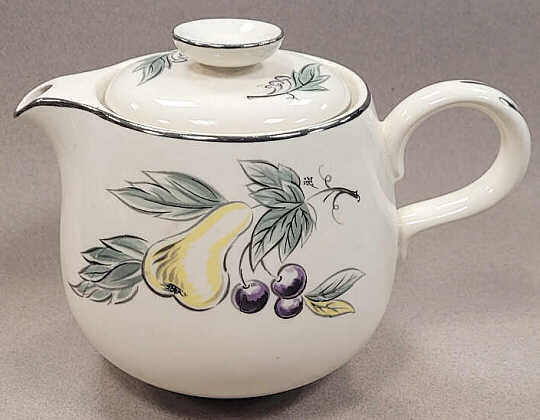
Rhythm teapot, RY-162 Champagne |
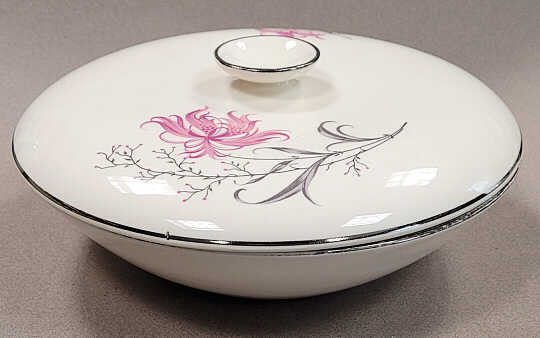
Rhythm covered casserole, RY-175: Pink Orchid |
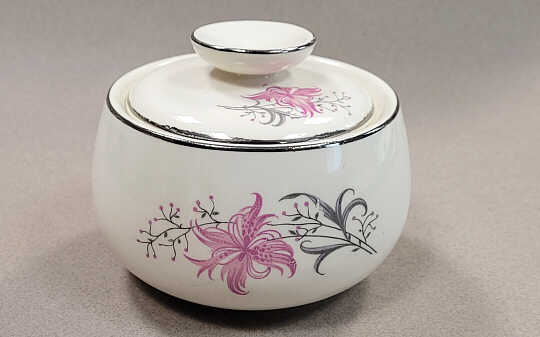
Rhythm covered sugar, RY-175: Pink Orchid |
|
Assortment of Items:
(*) Solid Color Rhythm only
(**) Decaled Rhythm only
|
- 10" plate
- 9" plate
- 8" plate
- 7" plate
- 6" plate
- Teacup
- Saucer
- Snack Plate*
- Creamer, tall
- Creamer, short
- Sugar
- Sauceboat
- Shakers, Swing
- 15" platter**
- 13" platter
- 11" platter
|
- 9" platter
- Fruit cup
- Cereal, Charm House
- Coupe soup
- Rim soup, Brittany*
- AD cup, Brittany*
- AD saucer, Brittany*
- Nappy
- Casserole
- Teapot
- Water Jug**
- Spoon Rest
- Juice pitcher, Fiesta (gray)*
- Juice tumbler, Fiesta (yellow, chartreuse, forest)*
- Large KK bowl (Chartreuse)*
- Medium KK bowl (Harlequin yellow)*
- Small KK bowl (Forest)*
|
|
|